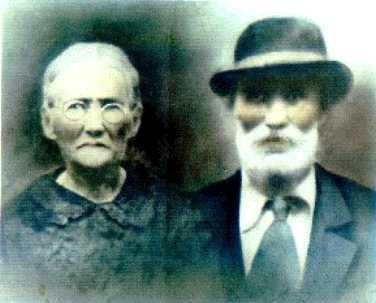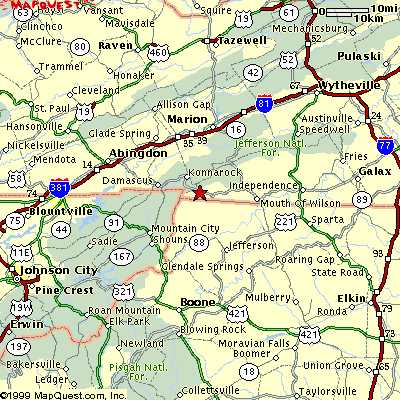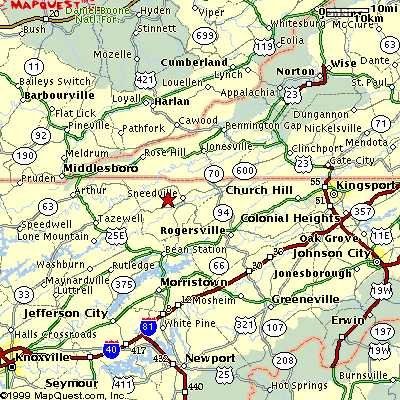an effort at rediscovery and reconnection

by Jason Adams
October/November 2001

Sally Sizemore and her husband William "Blackhawk" Sizemore.
The answer came out of a recent movement of mixed-ancestry people in this region who are reclaiming the epithet "Melungeon". Gatherings have brought to to light a large number of Sizemore-related people who want to know who they are, and why they have been labeled so many things throughout history. Most have never really known what they were, other than a generic sense of being "Indian". It was from this Melungeon movement that many of us discovered finally, some documentable proof of our mixed Indian/non-Indian heritage.
Being a mixed-Indigenous people, we do of course, have the right to self-identify as we choose. Having been exposed to the proof of our heritage, some of us recently have begun to identify as Metis once again. Additionally, this is a nation which seeks specifically to bring together the various Melungeon -type groups throughout the South. These groups, which would be encouraged to maintain their unique history within the nation, include Redbones, Brass Ankles, and Guineas. We who joined would like to share with you why we chose to do this, and encourage other Sizemore descendants who feel an affinity to this move, to join us.
For those unfamiliar with the term Metis, the word is defined as anyone of mixed ancestry that includes an Indian component. Usually, and in the Sizemore case in particular, it is the founding one. The term also describes people who cannot join federally recognized tribes for whatever reason. Although the term "Métis" is certainly French, and Métis is the term most often applied to Indian/French mixtures, it has also been applied, historically and in modern times, to anyone of mixed Indigenous and non-Indigenous ancestry. Similarly, the plural French term Mélangeon has been used historically to describe us.
Sizemores have been called Melungeons and Cherokees at various points throughout history, but we chose to join the Metis because it presents us with the opportunity to be who we are. Sizemores who have joined the Metis are not "wannabe" Indians. As one Metis explained, to the contrary, we "havetobe" Metis because our ancestors did not register with the U.S. Government. As a result most of us are culturally white, and ancestrally Indian and European. We see ourselves as neither European or Indian but as a Metis people, of Indigenous origin. As you read, you will find that our Metis ancestors had good reason not to register with the White Government.
All Sizemore histories and old family photos of which I am aware share two things: a strong Native American heritage and a visibly Native American appeance. The three most likely tribes of origin are remnant tribes of the Powhatan Confederacy, the Creeks, the Catawbas, and at one point in our history, the Cherokee. I also know that Sizemores have been labeled "Melungeons" at various times throughout history, a testiment to our historical Metis heritage.
The presence of the Sizemore name at the British empire's Jamestown colony, listing a "Portuguese-Jewish" indentured slave suggests an admixture of bloodlines that was not entirely Native. A few other Sizemores are said to have been Scots-Irish though I have not found evidence of this. Therefore, I would guess that most are the mixed-blood descendants of remnant tribes of the Powhatan - pronounced "poh-haw-tin" - which was a confederacy of many smaller tribes, and of Portugeuse, Jewish, English, Scottish and Irish indentured slaves. One Sizemore family tree shows direct descent from the Powhatan princess Matoaka (Pocahontas) and John Rolfe through the Bowling family, in six different family lines. I have my doubts as to whether we are descendants of Matoaka, as I think people generally like to be of some type of "royal" ancestry, but I strongly believe that this story is evidence that Sizemore Metis were founded and nurtured into existence by a number of different Powhatan women and their communities.
The Story of the Whitetop Laurel Band of Cherokees

Whitetop Mountain, located at tristate VA, NC, TN border.
This legend is evidenced by the fact that many of our family stories and trees trace back to a 2,000 member "Whitetop Laurel Band of Cherokees", which existed for at least a decade. The band was founded sixty years after the Trail of Tears, and nine years before the Eastern Band of Cherokees in 1905. The same number of Sizemores, 2,000, applied en masse for membership in the Eastern Band of Cherokees in the early 1900's but were denied for various reasons. Those who made the decision to reject the Sizemore claims were clear in their statement that Sizemores were Indians, but since none of their ancestors had willingly registered in any Cherokee census, they were not accepted.
The multi-volume book series, Cherokee By Blood documents this story which appears to be the primary source of the "White Top Cherokee" oral tradition in our family. Vol 1 page 171 bears the testimony of Whitetop Chief William H. Blevins:
"The word 'Chief' in my application, means that I am chief of the White Top Band of Cherokee Indians, an organization of the principal Cherokee Indians living about White Top, and was perfected about ten years ago. We organized so as to demand our rights in a body. We thought we had not been getting them before. In 1896, we wanted to go to the Indian Territory, and organized for that purpose. When the band was first organized there were about 2175, I believe. They were all Sizemore descendants. No one else was allowed to become a member if it was known. I have read the Decree of the Supreme Court of the United States referred to in my application, and have it at home. My father, Armstrong Blevins, I do not think was a party to the treaty of 1836 and 1846. I am putting my own interpretation on the decree."
(Thanks to our relation Bill Fields, editor of Under One Sky, the Melungeon information magazine for contributing this)
This documentation does not however, explain the later infusion of the word "Laurel" into our modern Sizemore family trees. But we do know that the Whitetop Laurel Creek runs off of Whitetop Mountain, and is a favorite recreational spot of fly fishermen and kayakers.
One claim for membership in the Eastern Band of Cherokees stated that Sizemores were their own tribe in and of themselves, known as "Sixemore" - probably due to the Whitetop membership requirement that one should be of Sizemore relation. Another said that "Old Ned" Sizemore came from the Catawba Nation, a claim that would not preclude his descendants from later becoming Cherokees, as Cherokees took in the remnants of many defeated bands and tribes.
Another family tradition in one of our lines says that the surname was created due to poor translation (or anglicization) of the Cherokee word "Esiyah", which means literally "large child". The name was given to a Cherokee man who was very good with children, and is reportedly found on the Dawes Rolls. The same family line is related to Sizemores in South-Central Ohio, near the town of Pedro, that still speak fluent Cherokee and take part in the traditional corn dance.
Some family trees indicate Whitetop Cherokee roots as early as the time of Cheif Redbird (whom Redbird Creek and the Redbird Mission is named after), George "All" Sizemore, Aggy Shepherd, Rhoda Sizemore, and "Old Ned" Edward Sizemore, all of who lived in the 1800's in Leslie, Maggofin and Clay County, Kentucky. These Sizemores migrated from Tennessee, Virginia and North Carolina prior to this time, and many lived in the Whitetop Mountain border area of Virginia/North Carolina. But for the most part the time period in which they lived does not coincide with the stated lifespan of the Whitetop band.
Following is an excerpt from an article on the George All Sizemore and Aggy Shepard connection to the Creeks and the Whitetop Laurel Band of Cherokees.
"The marriage of George "ALL" Sizemore to Aggy Shepard originated from a raid of Indiams on the white mans camp where they captured a white girl. In retaliation, the white men followed and rescued the girl and captured an Indian girl who was later given to a white family to raise (Aggy). Aggy is thought to have been a Creek Indian. George lived in both the white man's world, and the Whitetop Cherokee tribe throughout his life."
"The Indian Chief for whom Red Bird Creek in Clay County was named is known as member of the Whitetop Laurel Band of Cherokees from North Carolina. He was a great hunter and allured by the game in this remote region. He finally took up residence on the creek that bears his name at the mouth of Jacks Creek in this county. He came to his death by the abarice of the "pale face". There lived with him a crippled Indian named Willie. This man dressed the skins which Red Bird brought to their wigwam and looked after the culinary department of their house. Some hunters from North Carolina, greedy and unscrupulous, came to the wigwam and murdered Willie. Then they secreted themselves and awaited the return of the brave chief who had long before buried his tomahawk and for years had been living in peace with the white man, and as he approached his crude castle the bullet of an assasin laid him in the dust. They threw his body into a hole of water nearby which is still called "Willie Hole", and from which John Gilbert and others took him and buried him. One tradition is that he was sitting on the bank of a creek fishing when he was shot and that he fell into the creek."
(Reprinted in Kentucky Explorer, Volume 11, March 1997. Recorded in the 1870s.)
Identifying as Metis

Sizemores also live(d) near Sneedville, TN; Wise, VA; and Hyden/Stinnett, KY
In their testimony to join the Eastern Band of Cherokees, Sizemores said that they were of Indian blood. But either not of what particular tribe, or of tribes that were not Cherokee. A census of the Creek Nation of 1832 shows a Sam Sizemore as full blooded Creek, and one woman has told me that after Sizemores were rejected from the Cherokee, they applied to join the Creek and were accepted - how many I am not sure. At some point a group of Creeks named Sizemore were dislocated into the region of South Florida, where some Sizemores still live today. Another claims that "Old Ned" Sizemore came from the Catawba reservation. But most of our Sizemore ancestors are not found on many of the old Indian census rolls. It appears that Sizemores had Indian blood from several different tribes, as well as European blood. This of course could have made it harder to be accepted in any one tribe, not to mention among the "white" community.
This variability could mean many things, but given the simultaneous movement of Sizemores, and intermarriage with Melungeon communities around Sneedville, TN; Hyden, KY; and Wise, VA. I would guess it meant they had been labeled Melungeons in the past by census takers, had self-sufficient, prosperous farms stolen as a result and therefore avoided censuses.
Sizemore descendants decided to identify as Metis once again because we are tired of being what we are not: white. We don't wannabe anything, just what we actually are and that is mixed, or Metis. We chose that path because we see alot of possibility in being considered a Metis citizen. The biggest possibility is that we will have a greater degree of self-determination for ourselves and our descendants as a result. If you are a Sizemore descendant, or any person of mixed ancestry that includes an Indigenous component, I would encourage you to reconnect with your Metis roots. Another good group of folks that Sizemore descendants would want to hook up with are the Melungeons. Personally, I see Melungeons as the southern Appalachian version of the Metis, a story that played itself out all over the Americas. The Melungeons hold a national gathering bi-annually in Wise, Virginia on the campus of the University of Virginia at Wise. When I attended in May 2000, I met dozens of Sizemore descendants looking to recconect with their ancestry. The Melungeon websites are also linked below.
Hello Shaybo, Good work. Ihave been following this family for over 45 years, so I want to share a few things. William Blevins was not "Chief" of the Whitetop Band. It was his brother James Blevins, my line. My Nathan, was a son and his brother was married to Lydia Sizemore, Old Tory Ned Sizemore's daughter. All were Tories. The Sizemore, moved south from Va/NC border during this time and ran raids against the Loyalists.
ReplyDeleteAs for the Sizemore being connected to Jamestown, if there was a Portugues/Jewish slave, he was not the progenitor of this family. Sizemore have C-Haplo DNA with markers only found in North or South America, so Indegenious. I was just working on this Perry Co Ky Sizemores for a new friend. She has a multitude of men in her line that have the mother's surname as a proper name. To deal with the white man, they all had to take "white" names and often repeated family names in this fashion, Another was to name children after famous men in our country.